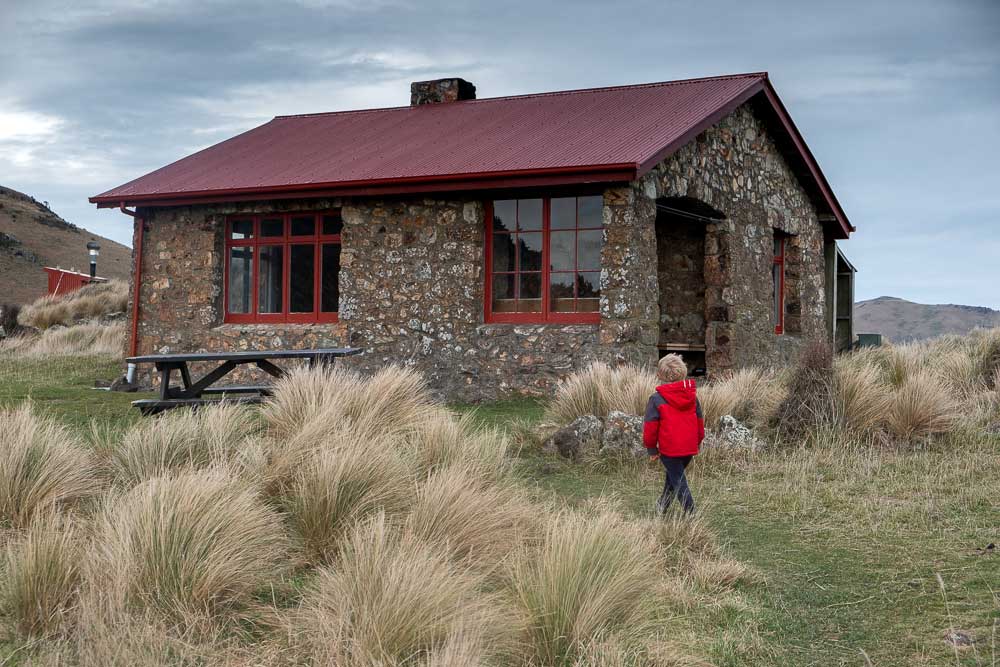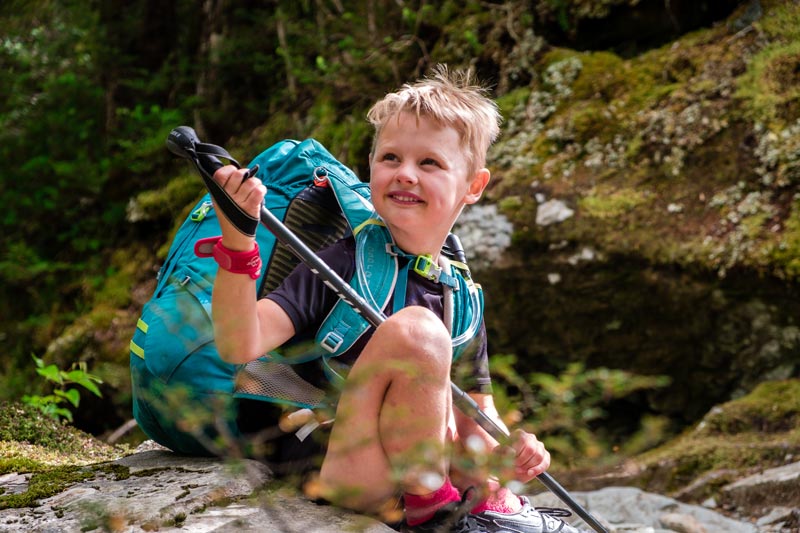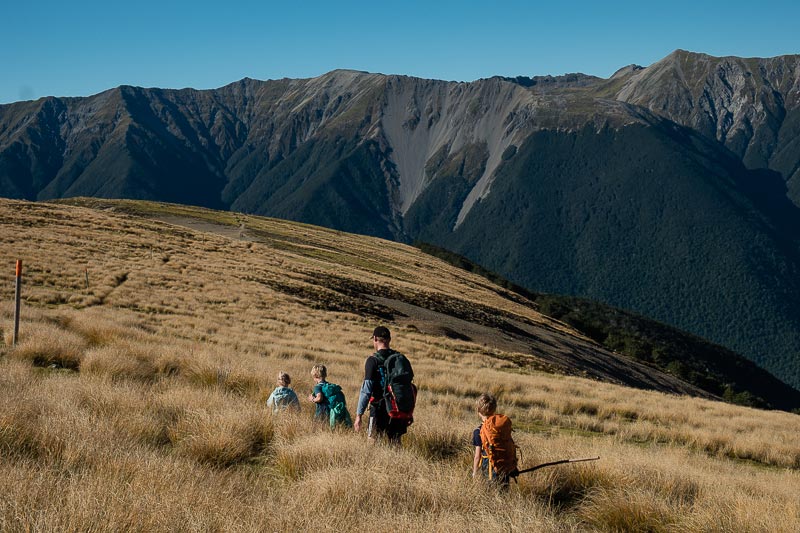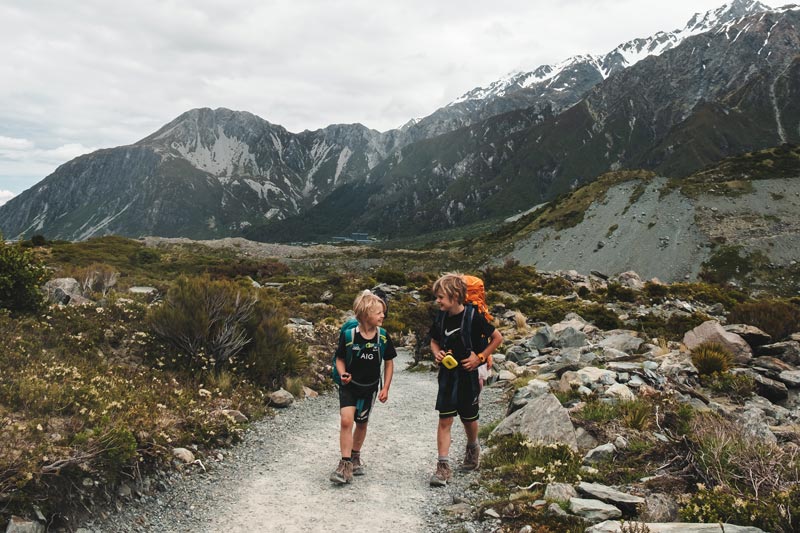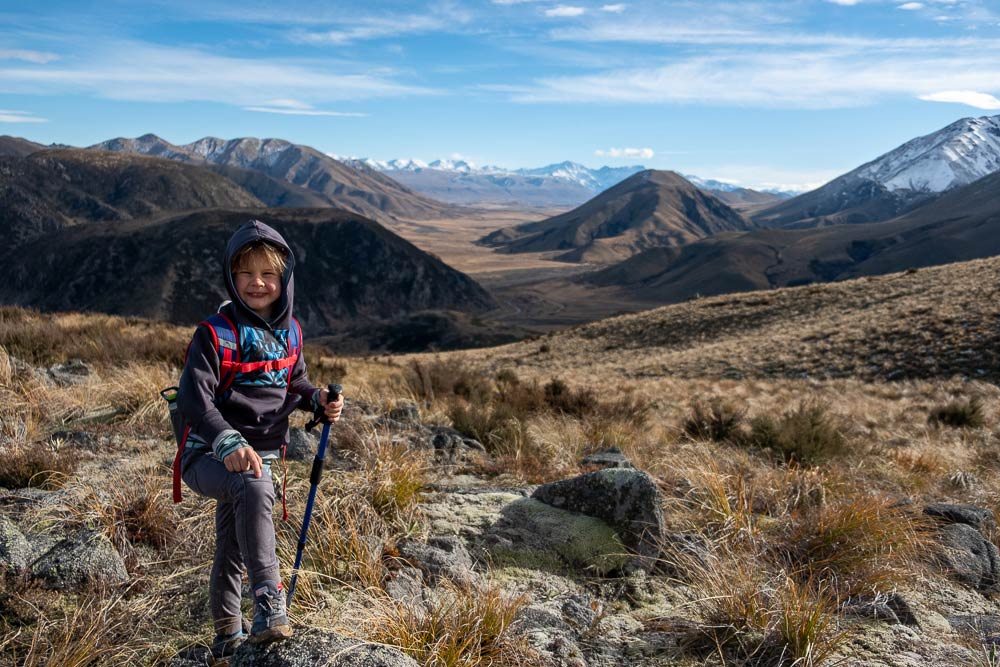Tramping Gear List: Hiking Gear for Kids and Families
Tramping Gear List NZ: What we pack on an overnight hike with kids
updated September 2024
Woohoo, you have a love of tramping, New Zealand’s favourite past time. If you’re new to New Zealand lingo, tramping is what we call hiking. I use both interchangeably and will do so throughout the article
I swear making sure I have packed the right things is harder than actually hiking. Does anyone else find that? So here I have created a tramping packing list, highlighting what we have chosen and why, as well as the brands we really love, so you can find some gear that you know is trustworthy.
If you are just starting out tramping with kids, you may look at this list and think “whoa”. But you are likely to have a lot of these things at home, and you can borrow tramping gear from friends and family too, or even your local tramping club (these do exist, give it a google)
How this article works
Under each heading, I will let you know what options you have, such as when kids can use shoes, or when its better to have specialised hiking shoes or boots. We want to make sure your hiking trip is as barrier free as possible, whilst also making sure you have a great, and safe time.
This list would be pretty similar if you’re looking for a Great Walk packing list. I would just add a whole lot more food or course, and some extra clothing layers since you are away for a few days. If you are looking for a day hiking gear list, you can just remove a few items like the sleeping bags etc. You will find a lot of the gear will be things you take no matter what, like a pack, food, safety equipment etc.
If you are also interesting in our camping packing list, click here for the article
Please note that this article contains affiliate links. These do not cost you any extra but any commission goes towards the running of this website. Thank you so much for your support
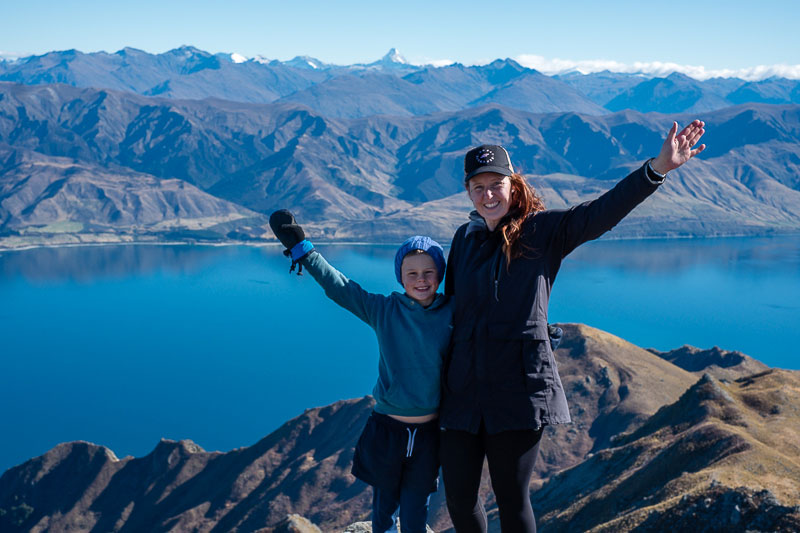
Hiking Essentials List: Our overnight hiking gear list for tramping in New Zealand
Individual items for Tramping NZ
- Hiking Backpack
- Backpack liner or waterproof cover
- Hiking shoes or boots
- Hiking socks
- Thermal base layers
- Warm mid layers
- Waterproof outer layers
- Thermals for sleeping or pjs
- Spare set of clothes/hut clothes
- Warm hat and/or sunhat
- Gloves in winter or colder conditions
- Sleeping Bag
- Pillowcase or inflatable pillow
- Small cuddly toy for little ones
- Survival Bag
- Water bottle or water bladder
Group items (can be shared between the group)
- Camp cooker/stove with pots if required
- Tramping Food
- Plates/bowls/cups
- Cutlery
- Cloth/scrubber and detergent
- Matches/lighter
- Toilet paper
- First aid kit
- Sunscreen
- Insect repellent
- Torch/headtorch
- Personal Locator Beacon/Cellphone
- Map/Compass/GPS/Route instructions
- Rubbish bag
Extras/optional
- Tramping Poles
- Water purification (if you choose not to boil water)
- Books
- Earplugs
- Powerbank
- Hut Shoes
Hiking Backpack
A good hiking pack is one of your most important pieces of kit. If you are walking for hours on end and your pack hurts, its not going to be a good trip at all. It’s one of my favourite pieces of hiking gear, so if you looking at buying yourself one, do spend the time looking at all the features.
If you are just going on a short walk of a few hours, you can probably get away with a normal backpack, as long as everything fits in. It’s the same with the kids.
But if you are going to be hiking for a long time or over multiple days, then I highly recommend a purpose built hiking pack
Why would you choose a tramping pack over a normal backpack?
- The frame will be much more comfortable. Hiking packs are engineered to support you and the gear. Comfortable straps, a good chest clip and hip belt are all important. I highlighly recommend trying on a pack in person and get them to adjust it to fit you.
- Hiking packs have lots of pockets to stash gear that is super helpful
- Lots of packs come with a slot for a hydration pack/water reservoir to make drinking easily accessible
- You can buy the right sized pack for your hike. The bigger you buy, the more you can fit, but also the more you end up carrying
Do I really need it? You need something to carry your gear and if you find a standard one uncomfortable or it makes your trip hard, then I’d consider upgrading to a purpose built hiking pack.
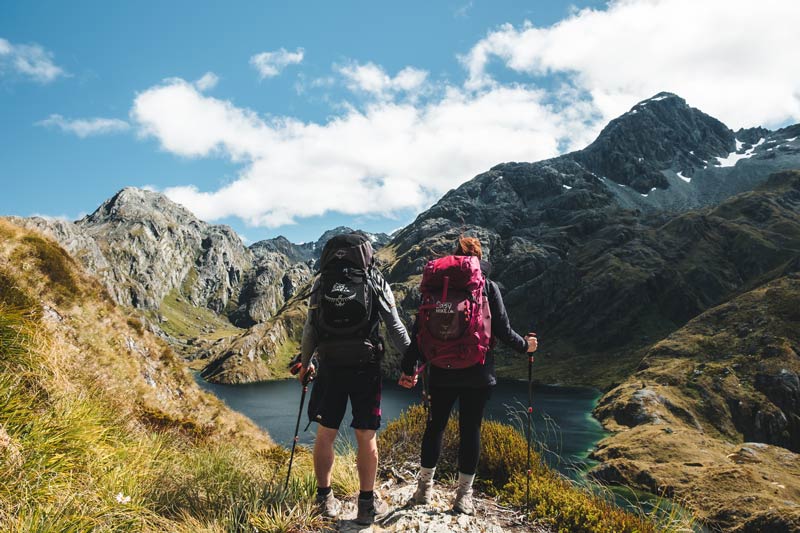
Photo above: We hired these packs from Easy Hike. They provided all our gear hiking the Routeburn Track which is ideal if you aren’t tramping like this very often
Kids Backpacks
Depending on the age of your kids, they can possibly get away with carrying a school bag or small backpack. Do be aware that small adult bags are not designed for little bodies. The shoulder straps will be wider and the bag may be too big.
Again for small trips with light bags, this won’t be too much of a problem, or you can carry a lot of their gear for them.
My kids have definitely found having a proper pack of their own much more comfortable. The packs stay close to their body, making them feel more secure and not as heavy, and they also love the ownership of having their own. Waist belts mean they carry the pack on their hips, as opposed to a schoolbag which really puts pressure on their shoulders.
Here are the tramping packs my kids have been using and why we like them
Osprey Jet 18: Great beginners tramping backpacks nz
At 6 years old, Kipton hikes with the Osprey Jet 18. (photo of the teal backpack below) I purchased this from Amazon and Nathan used this when he was younger too. I really love the stuff pocket on the front and the zip in the top of the bag. We always needs places to put things we need regularly such as snacks, or an extra layer.
I also like that it has a whistle, a chest strap and a very light waist belt. It doesn’t have a “frame” like an older kids hiking pack, but in saying that, the load shouldn’t be too heavy in it.
He carries a 1.5L water bladder, his sleeping bag and his own packing cube of clothes in here.
Deuter Fox 30: Kids tramping pack NZ
Nathan, at 8 years old, has just started using a tramping pack and chose the Deuter Fox 30L backpack. This tramping bag has an adjustable frame to give more room in the length of the back. This adjustable feature is great and hopefully this will last him a while. This exact style also comes as a 40L pack too.
He really likes the small pockets on the waist belt for snacks. I really like how you can have a separate compartment on the bottom for a sleeping bag, but also unzip this if you like, to have one larger inner section of the bag.
It fits him really well at 135cm and I’m really happy with it. The only thing its missing is a stretchy stuff pocket which I love on the Osprey.
He easily carried all the gear he needed for a 3 day, 2 night trip in this pack. He carried his sleeping bag, packing cube of clothes, snacks, 1.5L water bladder and there was room for some more items here.
This pack also comes in a 40L pack
Do I really need it? If your kids are school aged, you want them to start carrying something. It helps them feel like a big kid, take ownership of their own gear and take the load off you. Start with a small backpack if you have one and make sure you fit it correctly. Don’t choose a huge oversized school bag that will be awkward and heavy. You want them to enjoy the trip and want to come with you again.
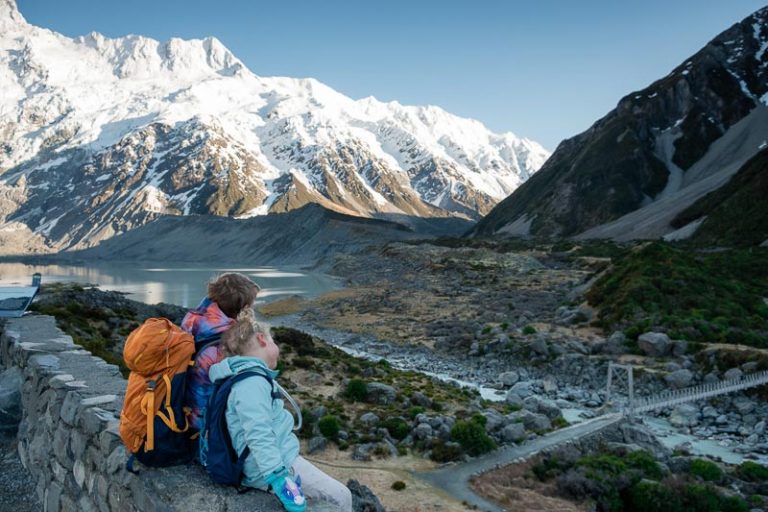
Backpack liner or waterproof cover
A backpack liner or waterproof cover will help your gear stay dry if it rains. You don’t want to end up with a wet sleeping bag or no dry warm clothes.
So you have two options. A backpack liner is essentially a big bag you put all your gear in, then pop this bag into your hiking pack. People often use a big black rubbish bag or you can buy specially made pack liners.
The downsides of these liners is that you have to double pack your bag.
The other options is to get a waterproof cover. These pop over your pack and cover the outside. You do need to be careful that you cover the bag properly and that you have one that clips on, so the cover doesn’t fly off.
Also make sure the cover is accessible to the outside. Most people will just pop these on when it starts to rain, which isn’t ideal in a big downpour.
Your backpack may already come with a waterproof cover, but many have these as additional add on’s. Just another thing to get money from you I reckon.
Do I really need it? A rubbish bag is cheap, so I’d take one. You don’t want wet gear.
- Shop waterproof backpack covers in New Zealand
- Pick up a cheap pack liner here. This is a little stronger than your standard rubbish bag and includes all your safety info on the bag too

Tramping shoes or tramping boots NZ
To start off with, some sturdy running shoes are great for kids in the outdoors. A lot of DOC tracks classified as easy walks are on good terrain, compacted dirt and gravel, therefore normal sport shoes are totally fine.
What hiking shoes and boots give you is a lot more grip and stability. Also as adults, if you are carrying a big load of gear, the right boots will help you manage that weight comfortably.
I have dodgy ankles so I almost always walk in hiking boots so I don’t roll my ankle. I find them pretty comfortable too.
My kids now hike in boots too, as there’s are pretty waterproof and they love to jump in puddles
Things to think about when buying hiking boots
- Make sure they are waterproof. It’s totally worth it, but will be more expensive. You’re often looking for the Goretex material to be used.
- Try them on with a thicker sock as you’ll usually be using one of them
- You don’t want too much movement, ie. not hitting the end if you are walking downhill
- Don’t pick something too heavy
- The best tramping boots are ones that you find comfortable, and this will change from person to person. Make sure you try them on in person, its the easiest way to compare.
What we use:
For kids tramping boots, we wear Northside hiking boots and Keen Targhee boots It’s often quite hard to find boots to fit 4 and 5 year olds depending on their shoe size, so these work pretty well. They aren’t 100% waterproof like they say, but to be honest, without an expensive boot with Goretex, not many are. But they do pretty well through most puddles.
- See the range of Keen boots
- Check prices of Northside boots in New Zealand
- Check prices of Northside boots on Amazon
I use Lowa Renegade boots and have found them pretty good for day walks and light overnight hikes. I found with a very heavy pack on, I get a little movement in the toes, but I do know there are boots made for multi day trips and heavier loads, so I could probably look at some of these.
You can read more about what gear we used in this article: Backyard Travel Family Gear Recommendations
Do I really need it? And do kids need specialised shoes to start off with? Nope, not at all. You may want to consider a spare pair if it’s a multi day walk and some paper to help dry them out overnight. of. Until you hit really rough tramping trails as opposed to well marked walks, good quality running shoes will be fine.
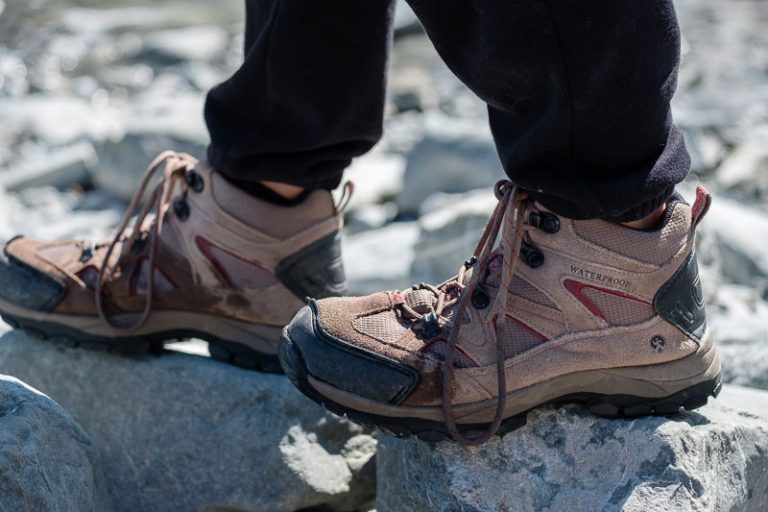
Hiking socks
I like to hike in a comfy sock that has a good mix of merino in it. Merino fabrics breathe well and they don’t smell, which is a great quality for a sock.
If you are hiking using boots, the other thing to remember is to choose a longer sock such as a crew sock, so it sits above your boot. There’s nothing worse than your sock slipping down when you are walking.
We have recently tried Creeper Socks, which are merino toe socks. The toe socks help to reduce blisters, a big pain when tramping. My eldest has a pair and always wears them, even around home. So these can also be a great option for tramping socks.
Do I really need it? Any socks will do. Specific hiking socks are likely to be more comfy and the right fabrics will make them less stinky.
- Our whole family have these Norsewear socks and love them. They have merino in them, also some with possum which are so soft.
- My kids have these Macpac hiking socks
- Buy Merino socks on Amazon
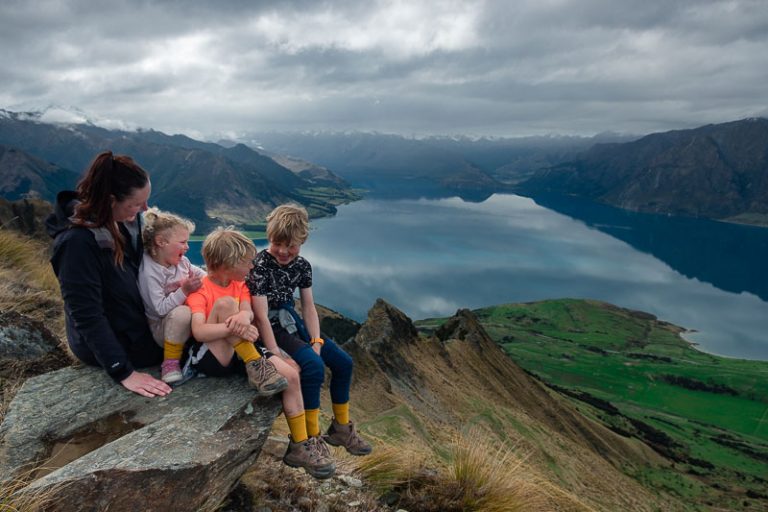
Thermal base layers
Top of your day hike packing list should be warm clothes and it is really important that you always take thermal base layers. Base layers are those that lie closest to your skin. You do not want these to be cotton.
Cotton clothes become cold and heavy when they are wet, and even sweaty. This means you can get cold easily when you are walking, so cotton is a no-no when you are tramping.
The most common base layers are merino, polypropylene or light synthetic materials. These help to wick away your sweat and keep you dry and warm
We love these thermal layers
Do I really need these? Yes absolutely. Dry and warm keep your family safe.
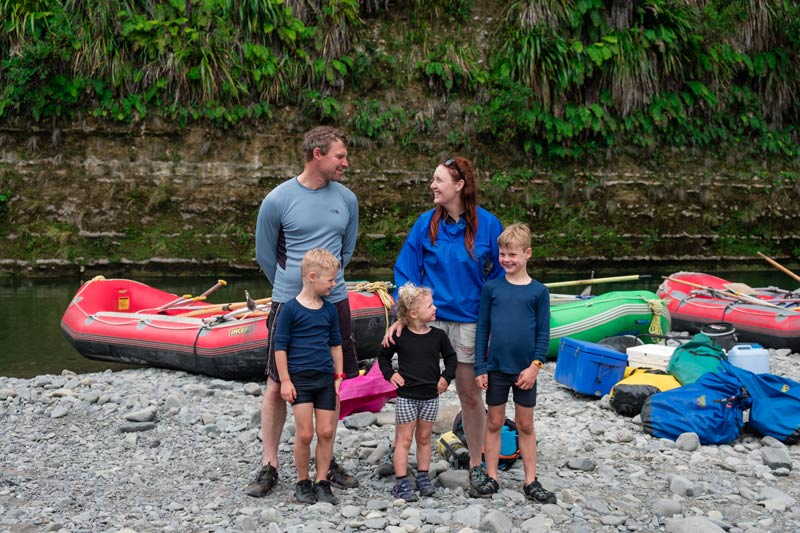
Warm mid layers
Your mid layer is the layer that will keep you warm. Fleece is a common mid layer. It’s great to have a separate mid layer and waterproof jacket so that you can take off a layer if you get too warm. You don’t want to get that cold sweat that will chill you later on in the day.
Puffer jackets can be a great insulator, like wearing a fluffy sleeping bag, but do make sure they don’t get wet. The fluffy down clumps and won’t keep you warm if its wet.
Do I really need these? Yes, you need to keep warm. A normal sweatshirt or fleece will be fine.
- Shop Fleeces for kids here
- Check out the Halo Down Jacket range for adults (on special you can get the jackets without a hood for $99, like Ashleys yellow down jacket below)
- My favourite adult fleece: The Zorali 1/4 zip fleece. Its so cosy and snug and has this small waterproof panel on the front that I just seem to like. Preferring this over my puffer for being in the hut for sure. You can see the cool range of colours here, mine is the Jindabyne
- Ashley also enjoys the Zorali Air Grid Fleece. Its super warm, but more lightweight than the 1/4 zip fleece. It’s heat trapping and moisture wicking so we really like this one as a warm hut option.

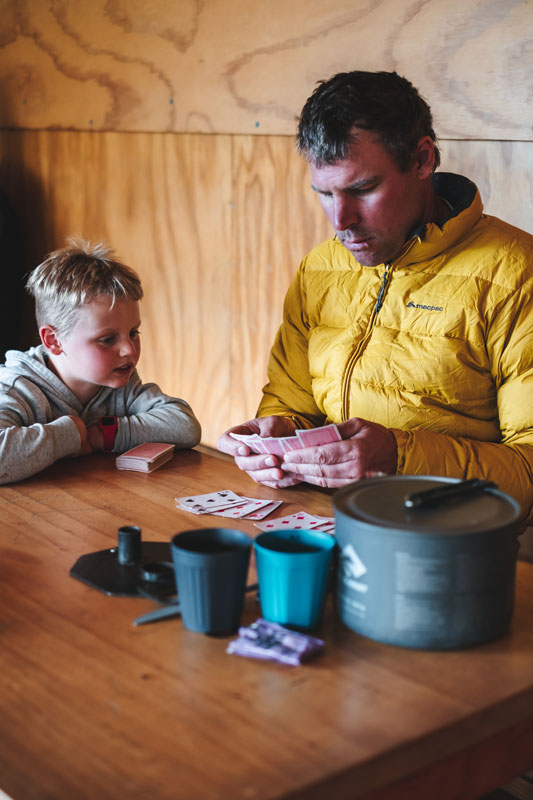
Waterproof Jackets
A waterproof jacket is one of your most important clothing items. You need to keep your core warm (heart, lungs etc) and dry, and one of the fastest ways to get cold is to get wet.
New Zealand has extremely volatile weather so its changes quickly. Many NZ tramping tracks are at a decent altitude so don’t get caught out. Always carry a waterproof jacket, even in the summer sun.
If you are looking at waterproof ratings on the jackets, aim for something that is 10,000mm or higher
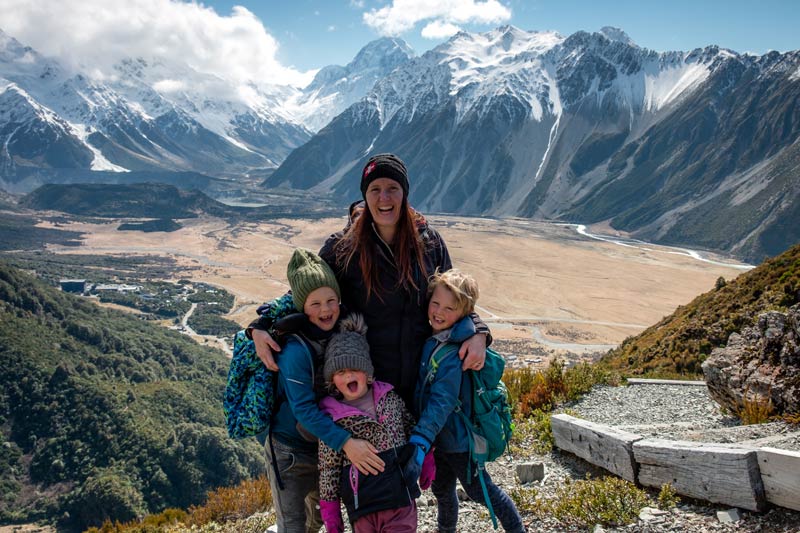
Kids Jackets
The kids have been using Therm Outdoor jackets for years. They have a range of splashmagic raincoats, light jackets and puffers which have been great. The splashmagic means that when the jacket gets wet, a pattern appears. A great encourager to get outside even when its raining.
- Use the code “BACKYARD10” at www.therm.co.nz to get 10% off of your Therm purchase
- See the range of splashmagic jackets here on Amazon
Adult Waterproof Jackets
I love my Macpac Copland Rainjacket. Its a longer length which helps keep everything dry and I love the vertical chest pocket. Its great for fitting my phone without getting in the way of my hiking pack. All jackets have a waterproof rating. You will want to look at something with at least at 10,000mm waterproof rating.
- Find more info about the Mens and Womens Macpac Copland jacket here
You can read more about the jackets we used and recommend in our Gear Recommendations article
Do I really need these? Yes! One of the most important items, you need a waterproof outer layer. It may be a lightweight pack it jacket thats completely waterproof, or a ski jacket, but you need something that will keep you completely dry.
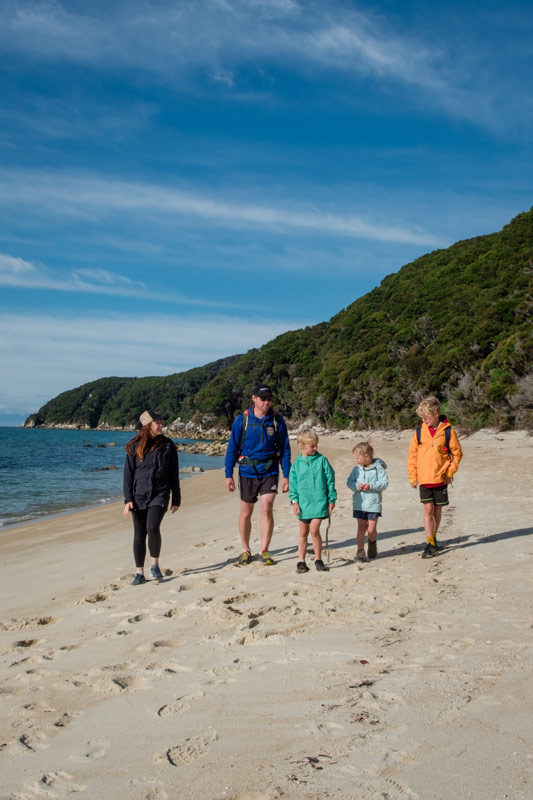

Tramping Clothes: Shorts or pants?
Often we talk about base, mid and outer layers to keep our chest and core all warm and snug, but what about your legs.
Nice lightweight shorts are great in summer. But if you are going through scraggly bush, many opt to have their legs covered. Thermal or polypropylene leggings are popular as they dry quickly. Thats why many people are seen in leggings with shorts over the top (for modesty mostly)
As a mum, I often hike in general exercise tights. For a day or so, these are great, but for multi day tramps, they aren’t the best for breathability. It really will depend on what you feel comfortable with. My favourtites are Lorna Jane and if you’re post partum, Cadenshae are awesome.
You can buy specific hiking pants from your local outdoor store. These are often a lightweight breathable material, commonly with good little stash pockets. Do make sure you can bend and squat in them, especially if you are going to be doing a bit of climbing too. I prefer some with a bit of stretch.
Do I really need these? You need some sort of shorts or pants. Just don’t bring any type of cotton trackpants as if these got wet, they would be heavy and get your really cold. The easiest way is having a pair of shorts with a thermal pant backup in your bag. Or a tramping classic: thermal pants with shorts over the top.

Thermals for sleeping or pjs
Adults will just sleep in their clothes which is totally fine. But if your kids are anything like mine and get dirty, then you might like to have a separate set of clothes or thermals for sleeping. You don’t need to take pjs, but little ones may use this as a signal for bed and may feel “more at home” in pjs. If you have room to carry them, consider taking them. See our section on baselayers for our recommended thermal options
Do I really need these? You just need something to sleep in, whatever you feel comfortable with
Spare set of clothes/hut clothes
If you are doing a multi day hike, it’s good to use your hiking clothes for all your sweaty walking, then keep a fresh set for around the hut. It also means that if you get wet, you have a dry set for camp.
You don’t want to walk in those dry hut clothes as then you may have two sets of sweaty or wet clothes.
Ladies tip: Bring a change of sports bra. I find I get the cold sweats that I can’t get rid of, so bring an extra one. Also a merino sports bra is good as it dries out pretty quickly and will keep you dry. I have an icebreaker one that is quite good.
Do I really need these? Not necessarily. If you stay dry and clean, you can just wear the same clothes. I get the cold sweats a lot so like to change so these are a must for me.
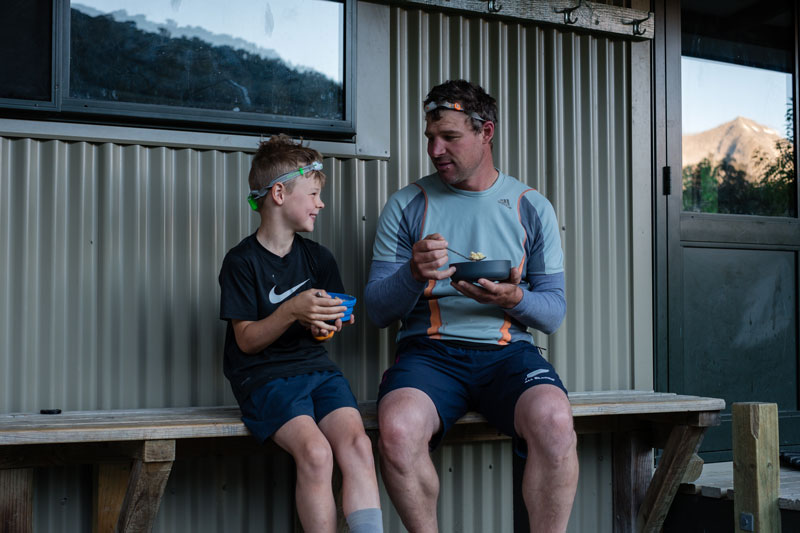
Warm hat and/or sunhat
Self explanatory and yes you really need these
Gloves in winter or colder conditions
Gloves in winter is a no brainer, but even in spring and autumn, it can get cold in the shade and as soon as their little hands are cold, it’s hard to get them warm again. I also recommend ski gloves to younger kids who may be using their hands to climb. They can hold onto rocks, or brush past sharp branches without hurting their hands.
We did this with my three year old on her first overnight hike and she was much more adventurous and keen to do it herself when she wasn’t worried about her hands getting sore. Necessary, no. Helpful – yes!
Do I really need these? In winter or cooler temps yes, otherwise its a nice to have for younger ones.
Sleeping Bag
A good sleeping bag is really important. You may be wondering if you can just use your normal sleeping bag from home or camping, or whether you need a specific tramping sleeping bag.
Well, the answer depends. Normal camping sleeping bags can be bulky and heavy. But if you as the adult as carrying this, and you have enough room in your pack and its not to far, then this is a great option if you are starting out.
I found that our general sleeping bags were too bulky and I couldn’t carry my bag and the kids stuff in one pack. They were just too big, even though I could have carried the weight. So we opted to buy some lighter, more compressible bags to actually be able to fit them in.
If you need some help figuring out what sleeping bag would be best, check out our article on Gear Recommendations here
Do I really need these? Yes you need some sort of sleeping bag to sleep in.
Our recommendations
- We have Sea to Summit sleeping bags with similar ratings to this one. Ours are older and not sold anymore
- This womens Macpac sleeping bag also has great warmth ratings and is light too. They can have great sales at Macpac too

Pillowcase or inflatable pillow
Some people don’t need a pillow to sleep on at all, but I feel more comfortable just sleeping on something. You could opt for a lightweight inflatable pillow, or another great option is to bring a pillowcase and stuff it with a sweatshirt or down jacket.
The pillowcase just helps it to stay in one place and not run all over your mat and has worked well for all my kids. Kids just feel like something is missing without it.
- They have very reasonably priced inflatable pillows at Macpac
- This is a great inflatable pillow on Amazon
Do I really need these? Nope but its helpful for sure

Small cuddly toy for little ones
Creatures comforts are great for kids who haven’t been tramping before and carrying an extra small teddy isn’t too hard. It helps them feel more secure and settled in their nighttime routine, and hopefully help them to sleep better all night
Do I really need these? Your child might to go to sleep, otherwise a nice to have
Survival Bag or Survival Blanket
A survival bag is a very important piece of emergency equipment and you should have one for every member of your family. Essentially it looks like a silver bag of aluminium foil. If for some reason you get injured or lost in the bush, you can wrap yourself up in the survival bag and this will help keep you warm by reflecting the heat back to you.
You can get these for under $10 and they are light, compact and an easy addition to your pack
Do I really need these? You really should yes, light and cheap, its a great Christmas stocking gift.
- Emergency blanket for under $6
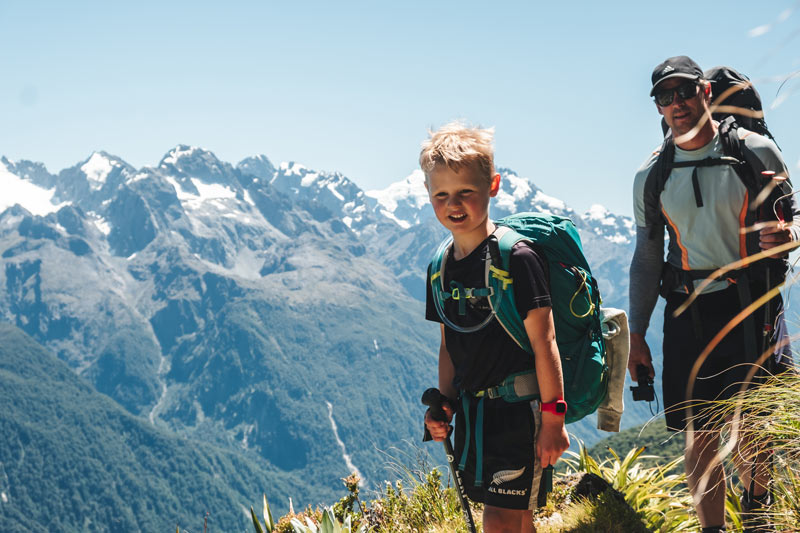
Water bottle or water bladders
Water is an essential on your tramping trip so make sure you bring a good vessel to drink from. Some people prefer a water bladder with a drinking hose as its easy to take small sips along the way, without having to stop and open a bottle.
Others prefer to have a water bottle they can refill from a stream or share between people. One thing to note is that reusable bottles can be very heavy, especially for kids, so as much as it pains me to say, a supermarket plastic bottle can be a good idea here if you are looking to reduce weight.
I have used these in the past and just reused them over and over. This is a very easy, cheap option to get you going. You can also buy lightweight pouches that will last much longer like a hydrapak pouch. We have water bladders now so the kids can all use their own. Its easy, but by no way essential.
Do I really need these? Yes you need something to carry water so you don’t get dehydrated.
Group items (can be shared between the group)
Camp cooker/stove with pots if required
There are lots of huts in New Zealand, including New Zealand Great Walk huts that have gas at the hut, so you don’t technically need a gas cooker. But there are plenty that do not have gas supplied. You can find this out on the DOC website as to what they supply.
For most you will need some sort of little cooker if you want to have hot food. If you are just doing a short overnight hike you can also get away with not cooking anything if you wish. A recent trip we did to Packhorse Hut, (less than 2 hours walk in), I just made a bacon and egg pie and brought this along with some snacks which was great.
But if you want a hot meal, then you will need to bring your own. You can get a JetBoil style all in one cooker. These will boil water for you in under 2 minutes and you can use this to make a freeze dried or dehydrated meal such as Back Country Cuisine or Radix meals. These meals you just add boiling water, wait and you are done.
Or you can bring a small pot or frypan and cook a real meal on a “bunsen burner” style cooker. These are light and easy to carry. You can also buy collapsible pots if you want to save space.
Do I really need these? Yes if you want to cook hot food but you can totally bring cold foods for dinner too
- We have this Jetboil Flash (New Zealand) and we love it!
- We also have the Torpedo 7 Rapid Boil Cooker and Pot Set. Its a bit cheaper than the Jetboil but works just as well.
- Shop Jetboil Flash on Amazon
Hiking Food
Gosh, hiking food could be a whole article on its own!
For most overnight hikes, you are likely to take lunch, dinner at the hut or camp, breakfast and perhaps lunch on the way out. Plus snacks, always lots of snacks.
Here are a few tips:
- Kids will burn a ton of energy when they are tramping so do make sure you have plenty for them to eat.
- Choose food that won’t get squashed
- Fresh food is good for day one such as sandwiches, day 2, choose foods that last better such as wraps, crackers etc
- With kids, plenty of food that you know they will eat is essential. This isn’t the time to be testing new meals, so do bring something you have tried before.
- Pack a few treats to help motivation later on (but don’t tell them about them or they’ll keep asking – M&Ms are small and don’t melt too badly)
Tramping Food ideas: Here is a quick sample of what we would take for an overnight walk
Day 1 Lunch: Salad filled rolls or wraps, a banana to eat early in the trip before it gets bruised, boiled eggs, cookie
Day 1 Snacks: Muesli bars, scroggin
Day 1 Dinner: Easy freeze dried tramping meals are popular such as Back Country Meal Pouches plus a dessert pouch to share. All these are just add water options.
Day 2 Breakfast: Weetbix and UHT milk (or you can try taking milk powder but mine don’t like it), or porridge (sachets work well here too)
Day 2 Lunch: Wraps with salami and cheese, apple, muesli bar, dried fruit or jerky
Do I really need these? Food is an essential yes.
Shop Food in New Zealand
- View range of Back Country Cuisine meals here (New Zealand)
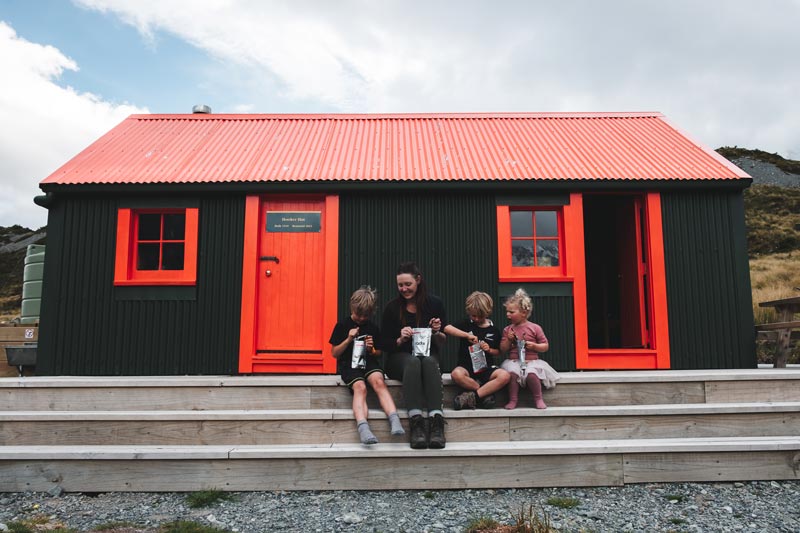
Plates/bowls/cups
You will obviously need something to eat off and we find bowls the most convenient. We can tip out a back country meal pouch and share it between two kids easily and it can double as a good bowl for breakfast.
Cups are really only essential if you wish to have a hot drink.
We use the Sea to Summit collapsible bowls. Perhaps slightly heavier than a plastic bowl, but they take up less room. Or shop Sea to Summit bowls on Amazon
Do I really need these? You could get away with not taking any of this, depending on what you are eating. If you are just eating freeze dried meals, you might just need cutlery.
Cutlery
Don’t forget cutlery to eat with. We also find a good sharp knife is handy for cutting fruit for the kids, or cheese. They seem to eat it better that way. I find we break plastic ones, but you can get lightweight metal ones like titanium if you want to go super light. Or just grab some from the cutlery drawer at home.
I also like to take a cutting knife for fruit or whatever. I travel everywhere with a serrated Victorinox knife, you just have to be careful how you stash it.
Do I really need these? Maybe not depending on what you are eating.
Cloth/scrubber and detergent
This is one thing I always forget. You obviously need to wash your dishes so you dont get your pack all dirty. There will be water at the huts to rinse out your things with and you could cope not using detergent for a meal or so, but if you are doing a multi day hike, then you definitely need to keep this gear clean.
A cloth or scrubber is useful, especially if you are cooking items that may stick
Do I really need these? For a short walk or overnight, you could just take home dirty dishes and clean later, but multi day I would take them.
Matches/lighter
An important safety item in general, but you may also need these to light the cookers as the huts or light the fire. Keep these well secure.
Do I really need these? A good piece of safety equipment, I would take them
Toilet paper
Even if the hut says there is toilet paper, always carry your own. If you have kids, sometimes they don’t give you the option of lots of warning to make it to the toilet. You should also carry a wee shovel too, as if No 2’s are required, you will need to dig a hole as deep as your elbow to bury the remnants.
Nobody wants to go tramping and come across your poo.
Do I really need these? Yes, you sure do.
First aid kit
Top of the tramping checklist for safety: a first aid kit. For me and my family, the most important items here are plasters, blister packs, and panadol. It’s also a good idea to take some kids pamol/paracetomol too.
Do I really need these? You don’t need to buy a specific kit, just take the things you usually use from your home medicine cabinet and a few extra items such as tape and bandages for injuries. If you’re not sure what to add, find a website that sells a kit and check out the list of whats inside. The majority of items you probably have at home.
- Shop fully stocked first aid kit here in New Zealand
- Shop 100 piece first aid kit on Amazon

Sunscreen
I always carry my sunscreen in a separate resealable bag in case it happens to spill. That stuff gets everywhere!
Sunscreen
- We love theBondi Sands Sport sunscreen which comes in a trigger spray, pump or stick and its SPF50+ and also the Hawaiian Tropic sunscreen as it has high SPF and smells amazing
- Do I really need these? Yes! Our New Zealand sun is crazy strong, even in winter
Insect repellent
A must in the New Zealand bush and particularly if you are going anywhere near water, insect repellent is a must. If you know the place is rife with sand flies, also consider what you will wear at the hut. Long pants and long sleeves may also help protect you.
I find bringing hut shoes such as slides, as opposed to jandals really good, as I can wear socks and slides around the outside of the hut without my ankles and feet getting bitten.
Do I really need these? Sure you could do without it, but for me I wouldn’t risk it.
- If you’re looking for a natural insect repellent, try these Parakito bands. Also great for kids if you don’t want to smother then in Deet. The pellets last up to 15 days and we’ve found that they work.
- This Okarito Sandfly Repellent is made on the West Coast which is basically sandfly heaven, so when they say its stops these bugs, it really does. Made of natural ingredients, you’ll find in online here and at lots of accommodation on the West Coast
Torch/headtorch
Some huts will have solar power lights that will work for a little while, but in general there isn’t lighting at the back country huts. You will need to take your own.
Headtorches are the easiest as you have your hands to open doors or cook food, while also using the light. We have also used a hanging lantern in some spots which has been great for lighting a whole table.
You will definitely need a light to go to the toilet in the dark, or in the evenings if you want to play cards or read.
Do I really need these? Yes, besides being handy, its an important piece of emergency equipment especially if you got lost or had to be out in the bush at night unexpectedly.
- We have this Petzl Reactive Headtorch. Amazing brand and more expensive than some others, but the quality is incredible. Its rechargeable and has reactive light. This means it adjusts the output of light depending on how dark it is.
- FYI Some adults lights will work fine on kids, but you just have to check the headsize. Many adults ones fall off on the kids as the straps are too big.
- Shop Petzl headlamps on Amazon
Personal Locator Beacon/Communications Device
The majority of places in the back country do not have cell phone reception, so you really need to have some way to contact emergency services if something goes wrong.
Some people would probably think that taking a Personal Locator Beacon on a short hike is overkill, but if you are travelling solo, or with kids in particular its a absolute essential.
I often tramp with three kids on my own, and while we are often not doing completely crazy trails, I am the only adult. If I was to injure myself and not be able to walk out, or if I could not carry out my injured child, then I would have to call for help with a PLB.
My kids all know how to use the PLB in the case of an emergency too. If I was to slip off the track and not get back up, then my kids are too young to leave and go back and call for help. Or if the children injured themselves badly, it wouldn’t be safe for me to just leave them all on the track while I went back hours to find reception or get back to the car.
So for these reasons we ALWAYS take a PLB.
In general, the price range for these are around $450-$1000, depending on the capability you are looking for, or you can hire them for around $20. Please keep yourself safe out there, as if something went really wrong, you’d be kicking yourself for not spending a measly $20.
Do I really need these? Yes please take one to keep you safe.
- We own this GME Locator Beacon
- We also own this ACR ResQLink Personal Locator Beacon
- See the features of the Garmin In Reach Personal Locator Beacon and Communicator. You can message with this device unlike the above two options.
- Shop ACR Resqlink on Amazon

Map/Compass/GPS/Route instructions
You should always have some sort of map and route instructions with you. I often download or screenshot the maps off the DOC website, or TOPO maps, as well as any instructions I think I won’t quite remember along the way.
Do I really need these? Yes, an important piece of safety info.
- Compasses make a great gift or christmas stocking stuffer. Find one here in New Zealand
- Shop the most highly rated compass on Amazon here
Rubbish bag
Don’t forget to take a small rubbish bag for apples cores, muesli bar wrappers, any food the kids won’t eat etc, and also any toilet paper you need to pack back out.
Do I really need these? A specific bag no, but make sure you carry all your rubbish out with you. There will be no bins along the way or at your hut. Stash it in the bottom of your bag, or on a pocket but be a tidy kiwi and take it home.
Extras
Hiking poles
A useful piece of tramping equipment, however hiking poles definitely aren’t essential. As a parent, I quite like them for rocky downhills where its far harder to bend down these days. I mean, I don’t feel old, but it definitely helps.
We have Leki adjustable poles with suspension. They adjust to a height that both the kids as well as the adults can use them. I rarely use more than one, so if you are looking into these, perhaps start with a set and see how you go.
If you do use them properly, transferring your weight to your arms can really take some load off your legs and can help propel you a little faster too. I, on the other hand, always have a camera in hand so I’m slow anyway.
- Check prices on adjustable hiking poles such as these Black Diamond tramping poles or these Macpac Hiking poles
- Shop hiking poles on Amazon
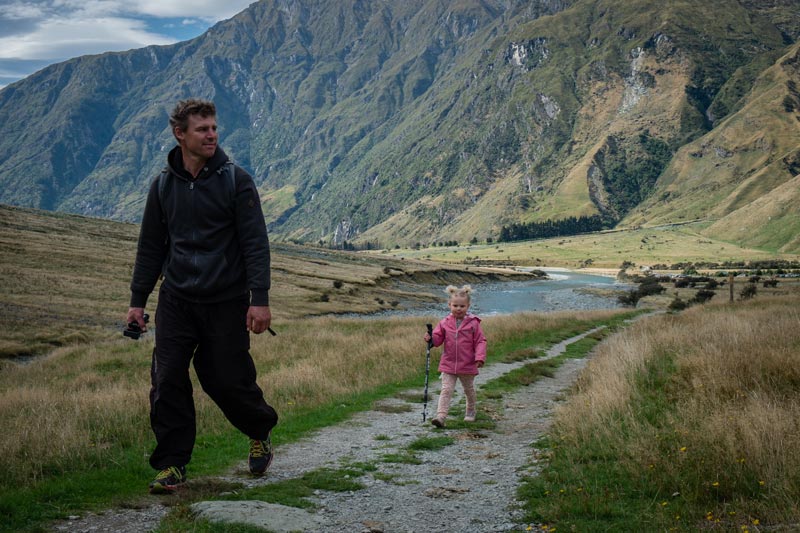
Water purification (if you choose not to boil water)
Most huts will say that you need to boil the water. This is usually because they collect rain water and I suppose you don’t know how often the water is used, or refilled. Perhaps there are some huts where the water has been sitting for quite a long time.
In general, I would say that the water is probably fine. When we have been up to Mueller Hut in the summer/autumn, a pretty busy hut, we always just drink it. But in saying that, its only a one day hike and we are heading back the next day.
On multi-day hikes you might just not want to take that risk, so you can boil water and let it cool before you drink it. Or you could chose some water purification options:
- You can add a water filter to your water bottle or bladder such as a Sawyer Mini Filter
- Use a Steripen which uses UV to kill all the germs
If you choose to fill up your water along your trip, we often grab water from waterfalls etc, do just make sure it is from fast flowing water and not a very still pond or lake. Fast flowing water is the safest spot and we do this all the time. (at your own risk obviously…)
Books and Games
In the evening, once its dark there really isn’t a lot to do at the huts. Most people will bring along a book or game of cards to help pass the time until bedtime.
Earplugs
In the huts you will literally be sleeping in a room full of strangers, so if you want to drown out that snorer, pack some earplugs
Powerbank
Now an overnight hike is a time to switch off, but if you need your phone for photos and those screenshots you took of the map etc, it might be work packing a powerbank.
I always put my phone on airplane mode to help save the battery. It will just drain itself looking for reception otherwise. Also if its cold, put your phone in a pocket next to your body. Cold batteries wear down faster.
I personally use this Belkin Powerbank with multiple ports from JBHIFI
Hut shoes
Not essential, but your muddy tramping boots aren’t allowed in the hut, and if you want to avoid putting on those boots just to go the toilet or head outside for a short time, then pack some hut shoes. Something nice and light is best.
Jandals can be a good light option, but I prefer slides as you can wear socks in them easily. Good for getting to the toilet in the night or just exploring outside. Many huts have lots of bugs and you may want to keep your socks on for protection. Crocs are also popular as they are nice and light.
If you are ready for something bigger and are looking for a Great Walks packing list, head over to our Routeburn article where we chat about the logistics, gear we took and how it went tramping a New Zealand Great Walk with kids.

Right, we hope you enjoyed our Tramping Gear NZ List. Hopefully you feel confident and ready for tramping with kids. Come and visit us over on Instagram for some more New Zealand tramping inspiration and feel free to come and chat with any tramping questions you may have.
Disclosure: Backyard Travel Family is a participant in the Amazon Services LLC Associates Program, an affiliate advertising program designed to provide a means for sites to earn advertising fees by advertising and linking to amazon.com.

Jennifer
Founder of Backyard Travel Family
Jen is a super organiser when it comes to travel. Having travelled extensively in Europe and Africa, has lived in London and the USA and holidayed in many parts of Asia, she is not a newbie to the travel space
Jen has three young children, 9 and under and travels around New Zealand with them.


